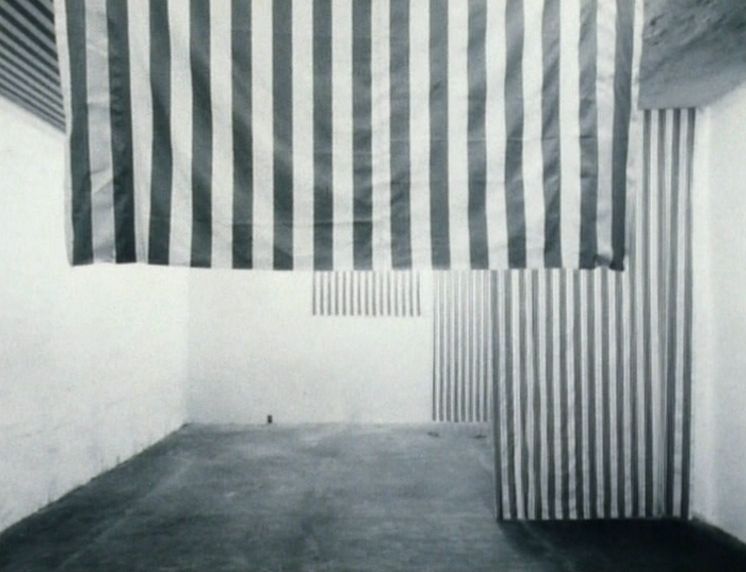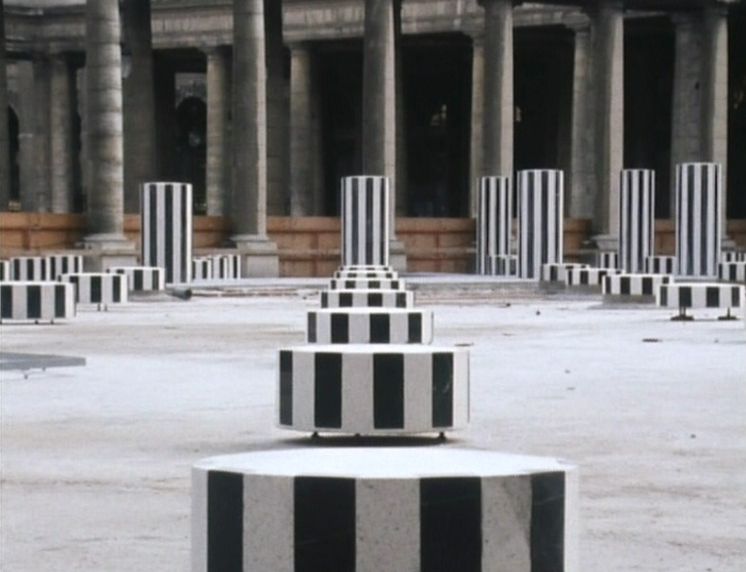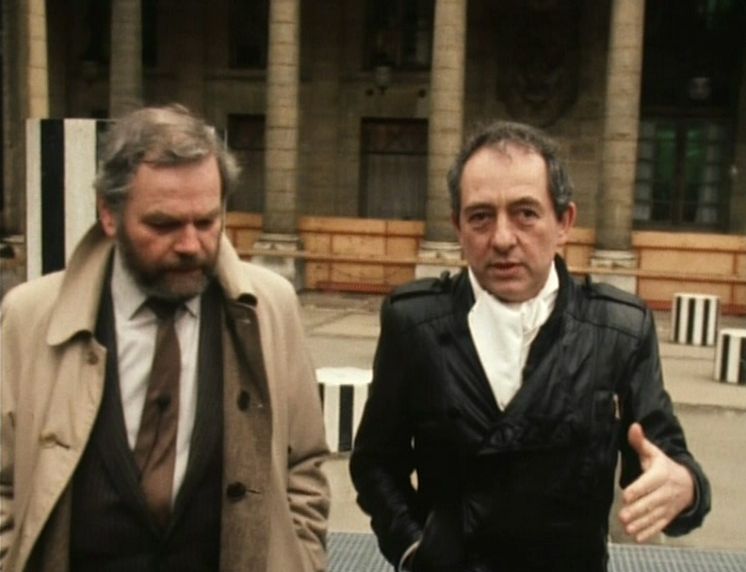Daniel Buren (Palais Royal)

Original format
Color
Color system
Languages
Availability
For the installation Les Deux Plateaux (The Two Levels, 1985-1986), Daniel Buren (°1938) placed a grid of 260 black and white striped cylinders of different heights in the elegant courtyard of the Palais Royal in Paris. The installation, usually known today as the Buren's Columns, turns the venue in a sort of chessboard, , as well as establishing a dialectic between the ground level of the courtyard and the level underneath, and thanks to the lighting the installation can be perceived differently during day and night.
This film alternates views of the installation Les Deux Plateaux and an interview with Daniel Buren: the French conceptual artist is very precise about how he relates to his site-specific work. First he analyses the general constraints of the site, then he formulates a response to it: the 260 cylinders provide a sort of visual echo to the columns surrounding the courtyard and create a three- dimensional space without obscuring the existing architecture. Or, as he puts it, “the location (outside or inside) where a work is seen is its frame (its boundary)".
Ironically, the aesthetic analysis of Buren’s intervention at the site was overshadowed by a lawsuit and mounting public passion—from the announcement of Buren’s project in July 1985 till the conclusion of the trial in December 1992, there were infinite discussions about the work. It became a battlefield between local and national authorities, it occasioned harsh arguments between left- wing and right-wing politicians, it led to debate in the Council of State and the French Parliament, and as mention above, it also led to a lawsuit in a Paris Court. In 1986 alone Les Deux Plateaux was the subject of 225 articles and 45 different reviews.
Part of the BRT (Belgian radio and television broadcast network) television series ’Het Gerucht’ (’The Rumour’).
Orginal broadcast date: 02/04/1986
Content:
00’00" Views of Daniel Buren’s work in the main courtyard of the Palais Royal, Paris, and interview of the artist. 18’20"
(Source: Jef Cornelis 1964 - 1990, Espace Art Contemporain : Maison de la culture et de la Communication de Saint-Etienne, 1991)



